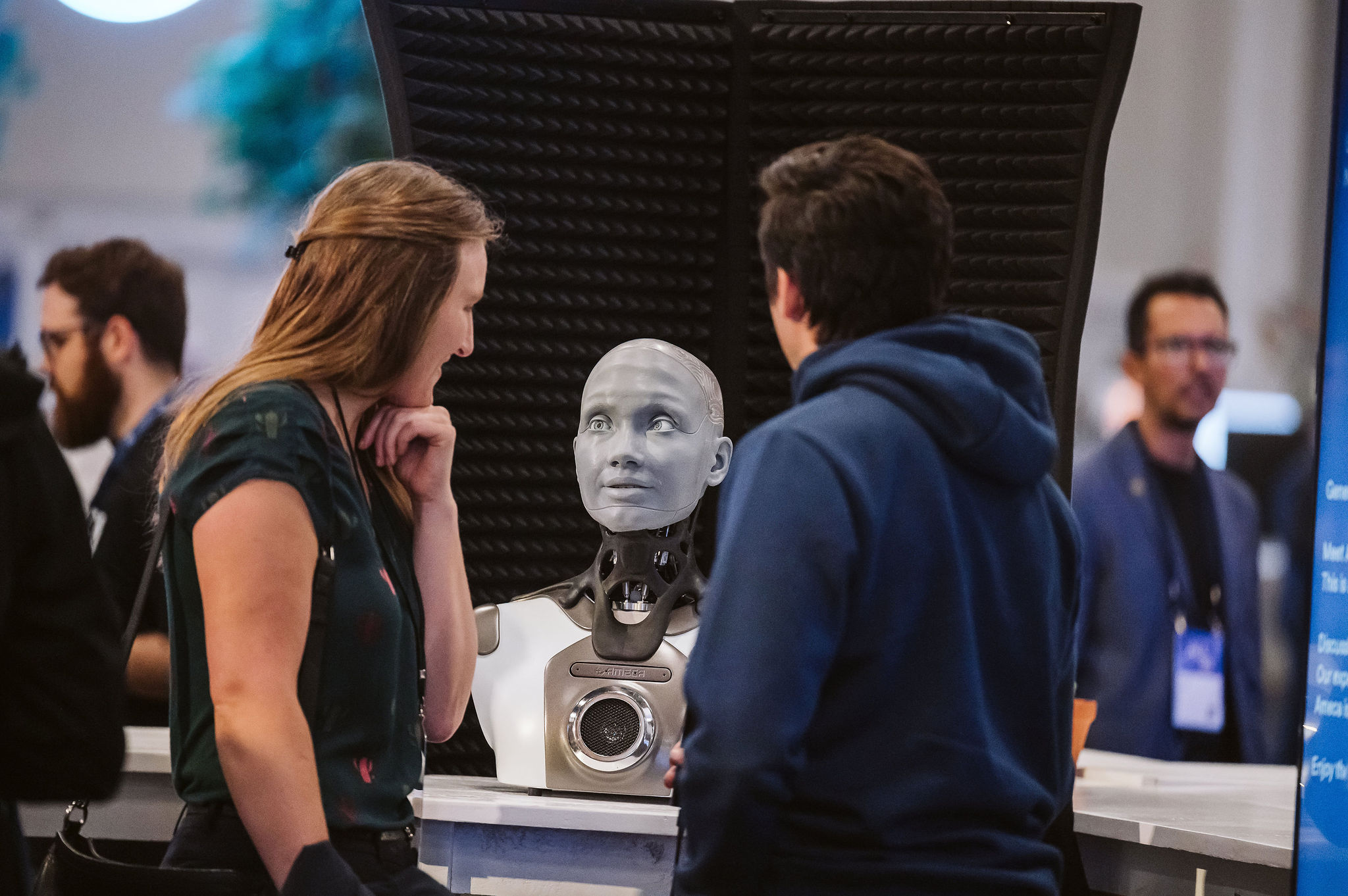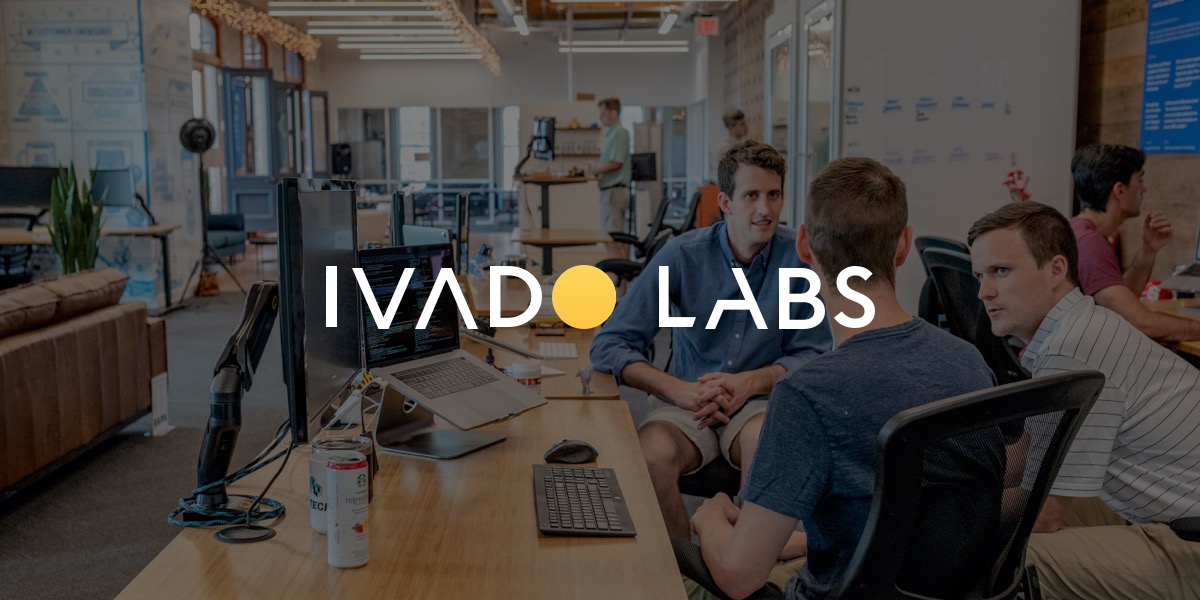News and resources
IVADO Labs Interactive Experience with Ameca Robot

We recently developed a program capable of answering a variety of questions about IVADO Labs’ services and artificial intelligence technologies. We collaborated with Engineered Arts to integrate our model into their humanoid robot, Ameca, to deliver highly interactive conversations. Unveiled at the ALL IN event, this experience was a resounding success! Here’s a look back at the key stages of this innovative project.
Generative Artificial Intelligence
Our goal was to offer a tangible glimpse into the current capabilities of generative artificial intelligence using a customized programming approach. That’s how we conceived the idea of developing a conversational assistant that could accompany us at our booth during the event and answer queries about both IVADO Labs, and more broadly the potential of artificial intelligence. By embedding our model into Ameca, we raised the bar for human-machine interaction in an event setting. Not only did this demonstrate how AI can create an informative and entertaining experience, it also proved to be an excellent awareness-raising exercise to communicate the potential and points of caution to be considered with today’s AI systems. In simple terms, we designed the “brain” of the robot, while Engineered Arts built its “body.”
The Brain Behind the Robot
To program Ameca’s “brain”, we used a combination of methods and tools enabling it to provide relevant answers.
Firstly, we created a knowledge base about IVADO Labs, consisting of a variety of text documents such as excerpts from our website, articles, slides, etc. This may seem like a simple step within one’s own organization, however, several technical challenges had to be considered. Among them was ensuring that the documentation was easily interpretable by the language model. This involved structuring information in a specific manner and iterating with the language model to improve response relevance. Another step was the conversion of text documents into a vector format to make them interpretable by the program.
Simultaneously, our expertise in the latest tools and large language model libraries allowed us to swiftly make an informed decision about which toolset to utilize to achieve the most efficient model in the given timeframe. We chose:
- LangChain and LlamaIndex to connect document resources, orchestrate model calls and provide a conversational interface;
- OpenAI API to encode documents, identify matches and answer contextualized questions.
Then, a key programming challenge was to provide adequate context and framework for the program to associate various document fragments appropriately when formulating answers. We mostly leveraged OpenAI’s GPT3.5-turbo for this purpose. To validate the model, we conducted a company-wide test at IVADO Labs, inviting the team to interact with the conversational assistant and rate its responses based on four levels of satisfaction/dissatisfaction. This testing phase helped us identify previously undetected errors and generate a set of questions for future test iterations.
In anticipation of deploying the model in an event setting where uncertainty is high, we programmed it to generate responses that would make interactions as natural and spontaneous as possible in terms of length and tone.



Behind-the-Scenes Q&A
When an attendee posed a question to Ameca, an automatic speech-to-text algorithm converted the spoken question into text via OpenAI’s Whisper software.
Once converted, the question was sent to our cloud-based API. Our API then called the model, retrieved an answer, and relayed it back to the robot. Ameca then responded using a synthetic voice generated by Amazon Polly, in either French or English, depending on the language used by the speaker.
Experience feedback
Testing our program in such an event context was incredibly enlightening. We fielded many questions about the robot’s operation, and many people assumed it was “simply” connected to ChatGPT to answer various queries. This gave us an opportunity to explain how we created a customized experience to deliver greater value to attendees.
We also engaged in dialogues with representatives from diverse industries about the application potential of generative artificial intelligence for their own organizations. Improved customer service through instant responses, streamlined information access, and quick scenario formulation were among the use cases discussed.
